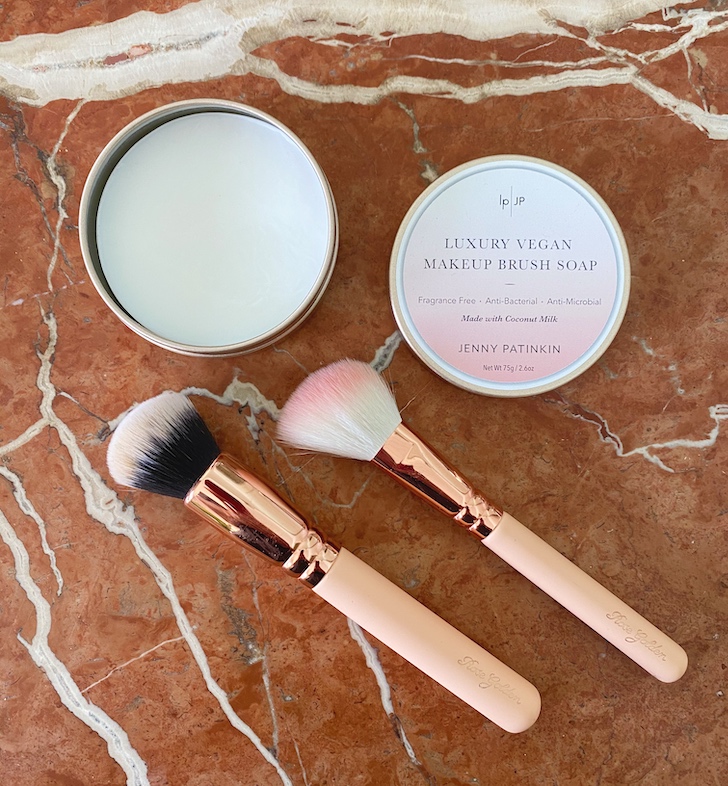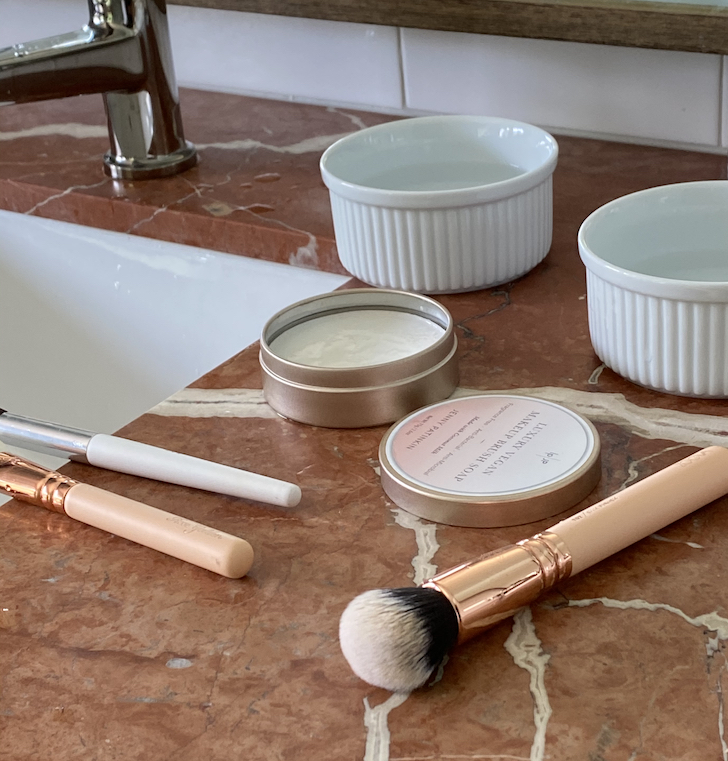
Cleaning makeup brushes isn’t the most thrilling task, but it certainly needs to be done. Bacteria, dead skin cells, oils, and product residue can accumulate quickly and cause a bit of a ruckus on your skin so it’s ideal to wash your brushes once a week, although it’s more of a twice-a-month thing for yours truly. #justbeinghonest
I will say, though…not much makes me happier than my brush container filled with freshly-washed and completely clean brushes! Here’s how I wash my brushes, which has become a much quicker and less wasteful task this year.
How To Clean Your Makeup Brushes

What You’ll Need
Soap
My favorite brush soap (and what’s helped me to significantly reduce my soap and water usage) is the Jenny Patinkin Luxury Vegan Makeup Brush Soap. Made with vegetable-based glycerin, coconut milk, and vitamin E, the sulfate-free, fragrance-free, anti-bacterial, and anti-microbial formula washes away oils and pigments without leaving a residue or drying out the bristles. I love this stuff!
Water
Self-explanatory.
2 bowls
I like to have two bowls filled with fresh water. One for dipping the makeup brush before swirling in the soap, and one for rinsing after the soap.
Cleaning Instructions
1. Submerge brush head in a bowl of warm water.
2. Swirl the bristles over the soap in the tin until a light foam begins to form.
3. Once slightly foamy, use fingertips and hands to gently massage away oils and pigments, rinsing and repeating as necessary until pigments are no longer visible and a rich lather has developed.
4. Dip into the bowl of clean water and swirl/press to get most of the residue off.
5. Rinse under running water for a few seconds until they feel squeaky clean and no residue is left.
6. Squeeze the brush head in a washcloth or towel to remove excess water and reshape.
7. Lay flat on a counter with the head hanging over the edge in order to assure full air circulation while drying. If you have a brush that tends to splay, these mesh drying covers are fantastic!
Important to note: Vegan brushes can take longer to get foamy than natural hair brushes as they are not porous and do not absorb any oils, allowing them to build up on the surface instead. Vegan brushes that have been used with creamy products may take several swirls/rinses before foam begins to form. Once they have fully lathered, they are free of all pigments and oils.
Here’s a quick video tutorial.
That’s it! Using the Jenny Patinkin soap has really helped me to stop running the tap water excessively and stop using pump after pump of liquid soap. It’s definitely a win-win! Any questions about brush washing? As always, feel free to leave them in the comment section!


